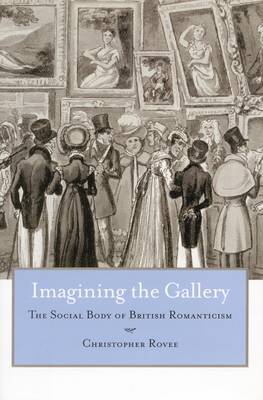
- Afhalen na 1 uur in een winkel met voorraad
- Gratis thuislevering in België vanaf € 30
- Ruim aanbod met 7 miljoen producten
- Afhalen na 1 uur in een winkel met voorraad
- Gratis thuislevering in België vanaf € 30
- Ruim aanbod met 7 miljoen producten
Omschrijving
The Romantic period has long been associated with the sublime landscape. In Imagining the Gallery, we learn that it was also the age of the portrait. Rovee reads the rise of portraiture in the Romantic period as an index of a massive reimagining of the British social body. Cultural institutions such as art galleries, he argues, are bastions of conservatism as well as dynamic spaces for envisioning a new political order. From the family gallery at Pemberley in Austen's Pride and Prejudice to the printed portraits of working men and women that were published in books; from the eighty-plus paintings of the Poet Laureate William Wordsworth to the gigantic living portrait that is Victor Frankenstein's Monster, Imagining the Gallery reveals portraiture as an enormously influential cultural discourse that helped to remake the body politic in the image of the private individual.
Specificaties
Betrokkenen
- Auteur(s):
- Uitgeverij:
Inhoud
- Aantal bladzijden:
- 272
- Taal:
- Engels
Eigenschappen
- Productcode (EAN):
- 9780804751247
- Verschijningsdatum:
- 24/04/2006
- Uitvoering:
- Hardcover
- Formaat:
- Genaaid
- Afmetingen:
- 161 mm x 237 mm
- Gewicht:
- 489 g

Alleen bij Standaard Boekhandel
Beoordelingen
We publiceren alleen reviews die voldoen aan de voorwaarden voor reviews. Bekijk onze voorwaarden voor reviews.











